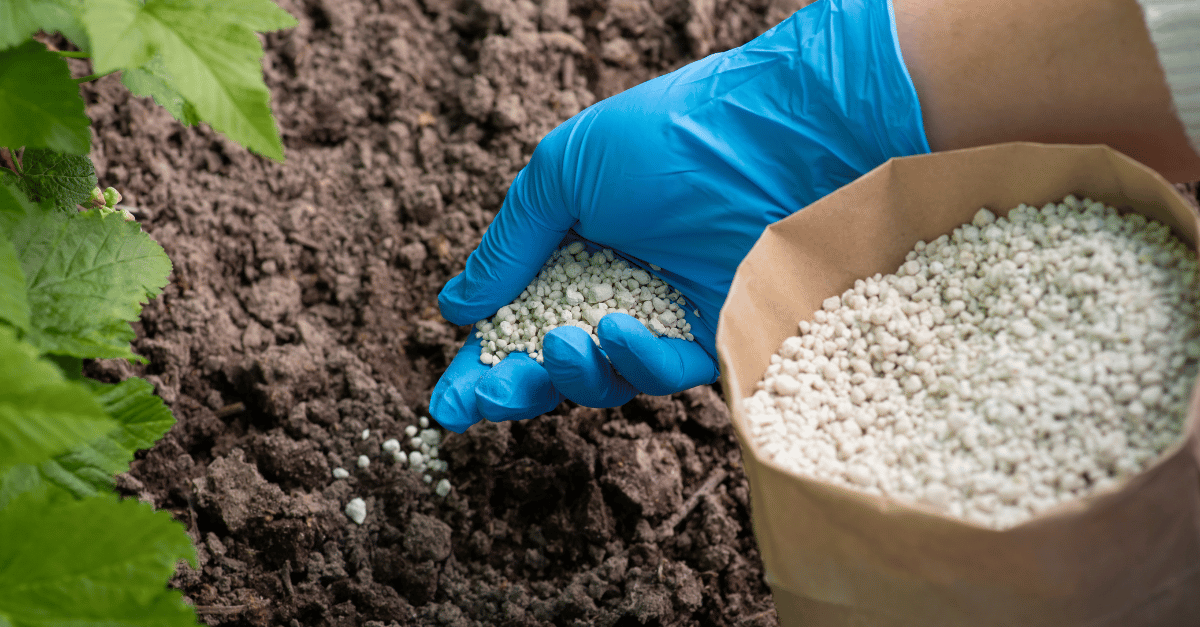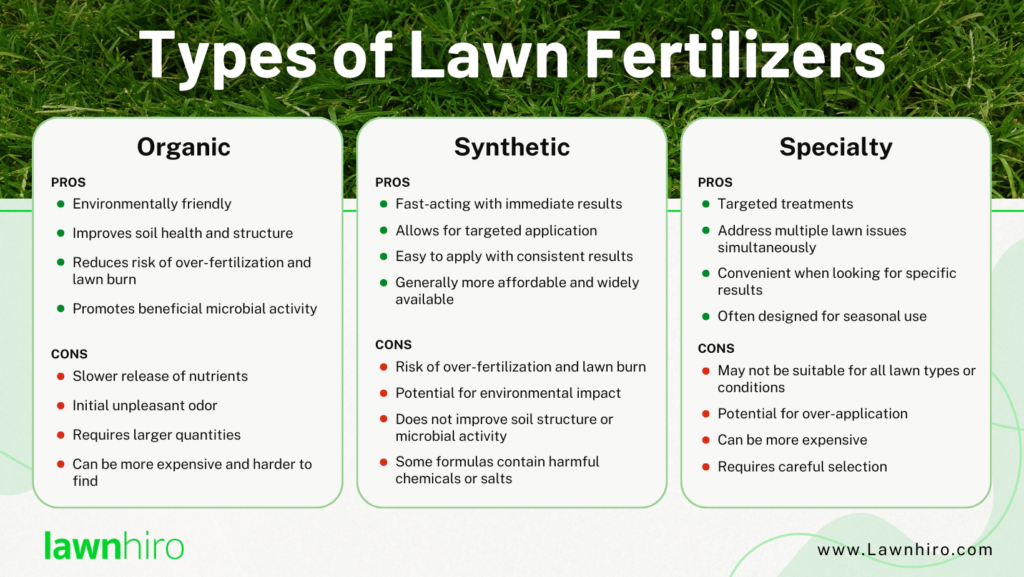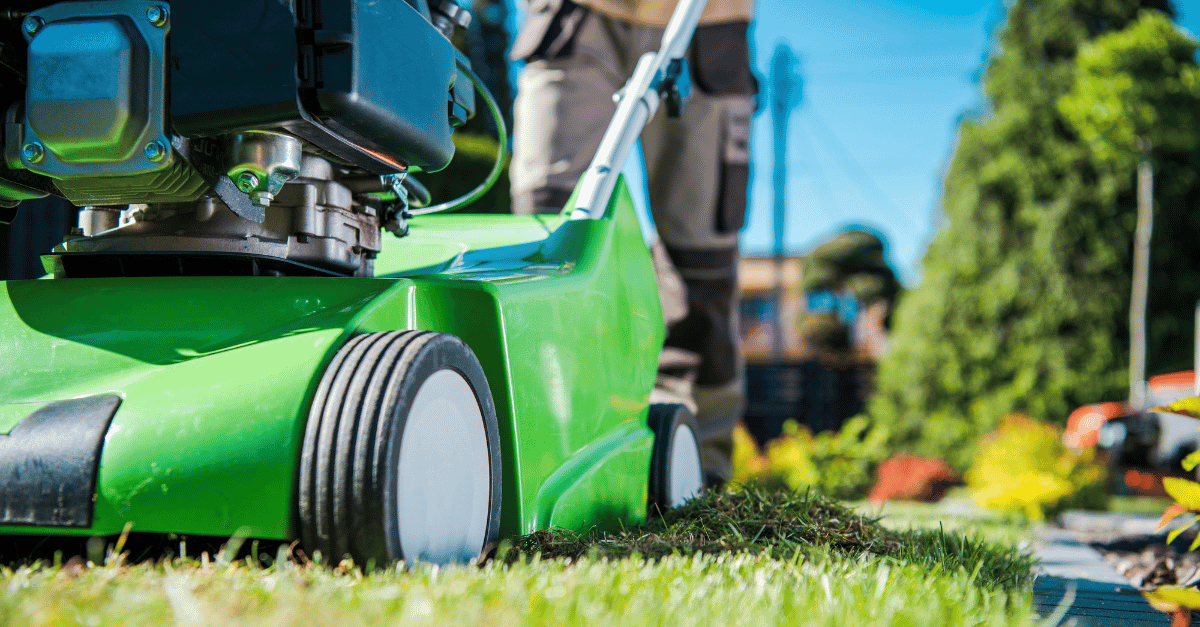
The Ultimate Guide to Fertilizing Your Lawn
A well-maintained lawn boosts your home’s curb appeal and provides a relaxing outdoor space. Fertilizing is an important step to achieving a lush, green lawn. Proper fertilization ensures your grass gets the nutrients it needs to thrive.
Understanding the Basics of Fertilizing
What is Lawn Fertilizing?
Fertilizing your lawn means supplying essential nutrients to the soil. These nutrients support healthy grass growth and development. Nutrients like nitrogen, phosphorus, and potassium are crucial for a healthy lawn.
Benefits of Fertilizing Your Lawn
- Improved Grass Growth: Fertilizers provide the nutrients that promote healthy, strong grass.
- Enhanced Color and Density: Proper fertilization results in a greener, denser lawn.
- Better Resistance to Pests and Diseases: Nutrient-rich grass is more resilient against pests and diseases.
- Reduced Weed Growth: A healthy lawn can outcompete weeds, leading to fewer weed problems.

Types of Lawn Fertilizers
Organic Fertilizers
Organic fertilizers include compost, manure, and bone meal.
Pros:
- Environmentally friendly.
- Improves soil health and structure.
- Provides a slow and steady release of nutrients.
- Reduces the risk of over-fertilization and lawn burn.
- Promotes beneficial microbial activity in the soil.
Cons:
- Slower release of nutrients compared to synthetic options.
- May have an initial unpleasant odor.
- Requires larger quantities to achieve desired nutrient levels.
- Can be more expensive and harder to find than synthetic fertilizers.
- Nutrient content may vary, making precise application challenging.
Synthetic Fertilizers
Synthetic fertilizers come in granular, liquid, and slow-release forms.
Pros:
- Fast-acting with immediate results.
- Precise nutrient content allows for targeted application.
- Easy to apply with consistent results.
- Available in various forms (granular, liquid, slow-release).
- Generally more affordable and widely available.
Cons:
- Risk of over-fertilization and lawn burn if not applied correctly.
- Potential for environmental impact, including runoff and pollution.
- Does not improve soil structure or microbial activity.
- May require more frequent applications.
- Some formulas may contain harmful chemicals or salts.
Specialty Fertilizers
Specialty fertilizers, such as weed and feed or winterizers, target specific lawn needs.
Pros:
- Targeted treatments for specific lawn needs (e.g., weed control, winter preparation).
- Can address multiple lawn issues simultaneously.
- Convenient for homeowners looking for specific results.
- Often designed for seasonal use, enhancing lawn care routines.
Cons:
- May not be suitable for all lawn types or conditions.
- Potential for over-application if not used correctly.
- Can be more expensive than general-purpose fertilizers.
- Some specialty formulas may have limited availability.
- Requires careful selection to match lawn needs accurately.
How to Choose the Right Fertilizer for Your Lawn
Soil Testing
Before fertilizing, conduct a soil test to determine nutrient levels. Soil tests guide you in selecting the appropriate fertilizer. You can buy a soil test kit or hire a professional for this task.
Understanding Fertilizer Labels
Fertilizer labels show N-P-K ratios, indicating the percentage of nitrogen, phosphorus, and potassium. Choose the ratio that meets your lawn’s specific needs.
Seasonal Considerations
Select fertilizers suited for the season. Spring, summer, fall, and winter each have optimal fertilization strategies. Timing your fertilization schedule ensures the best results.

Steps to Fertilize Your Lawn
Preparation
- Mow your lawn before applying fertilizer. This ensures better contact with the soil.
- Aerate your lawn to improve nutrient absorption.
- Lawnhiro offers mowing and aeration services to help maintain the health of your lawn.
Application Techniques
- Use a broadcast spreader or a drop spreader to apply fertilizer evenly.
- Follow the instructions to avoid uneven coverage and potential lawn burns.
Watering After Fertilizing
- Watering activates the fertilizer, helping nutrients reach the grass roots.
- Follow recommended watering guidelines to ensure effectiveness.
Common Fertilizing Mistakes to Avoid
Over-fertilizing
Over-fertilization can burn your lawn. Look for signs like yellowing or wilting grass. Remedy this by watering thoroughly and adjusting future applications.
Under-fertilizing
Under-fertilized lawns may appear pale and sparse. Recognize this issue and increase fertilizer application as needed.
Ignoring Weather Conditions
Weather affects fertilizer effectiveness. Avoid applying fertilizer before heavy rain or during droughts. Plan applications around the weather forecast.

Why Hire Lawnhiro for Your Lawn Care Needs
Lawnhiro offers mowing, overgrown lawn rescue, and aeration services that complement fertilization. Schedule your lawn care services with Lawnhiro today!






